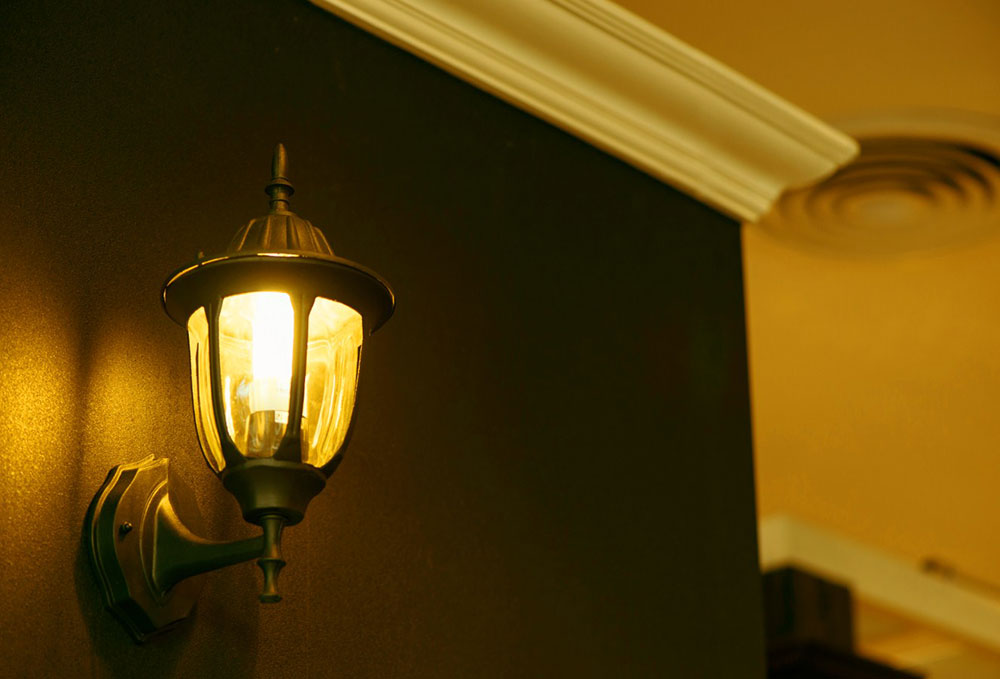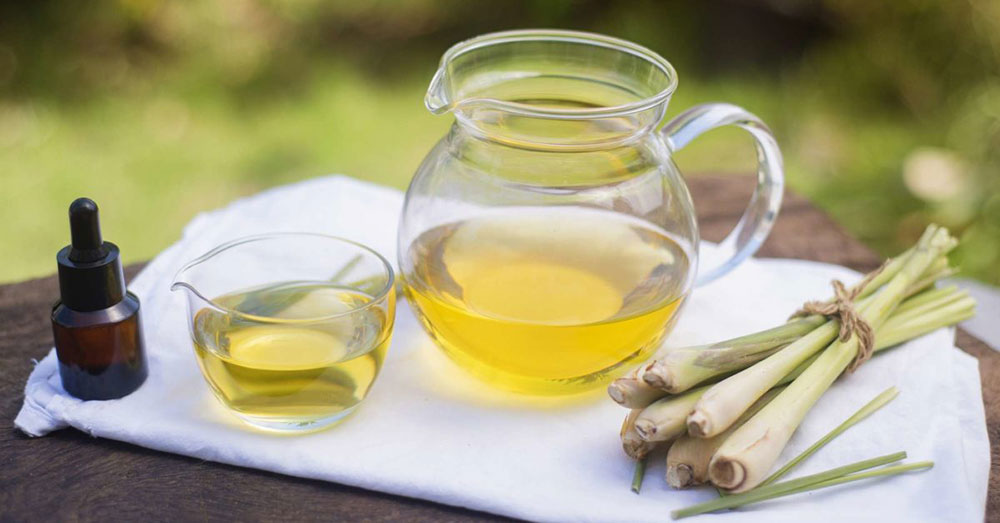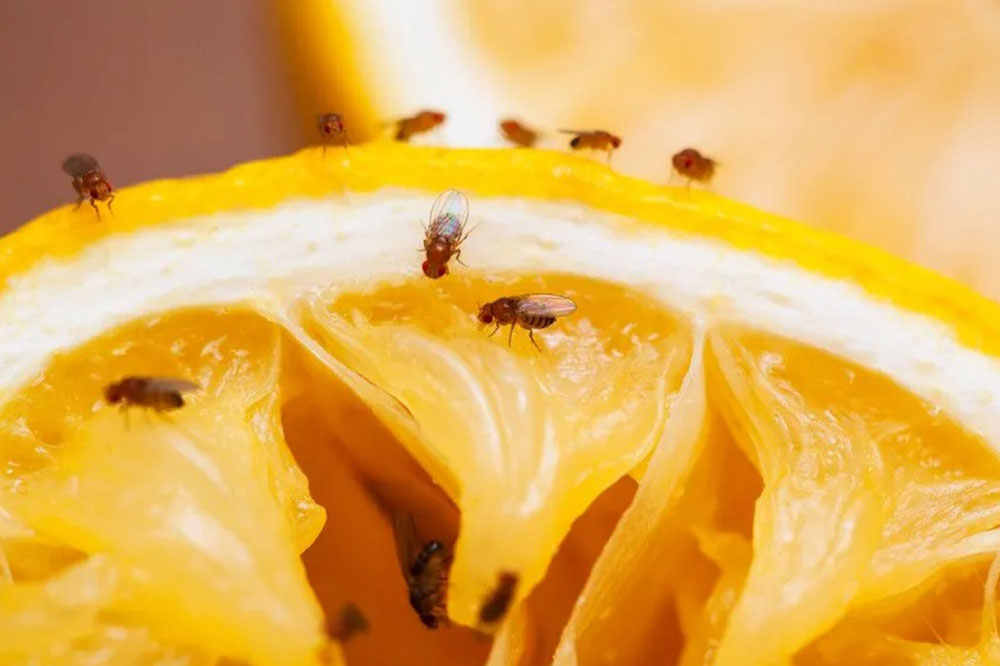The housefly, also known as Musca domestica, can be one of the worst bugs you’ll encounter in your home. This little flying insect can be found wherever people are, and the weather doesn’t stop them from finding something to eat. Of course, flies play an important role in nature, but they could do their cleaning tasks far from our homes. If you’re tired of dealing with them, read this guide so you know how to get rid of flies outdoors.
The problem with flies is simple: your food turns them into disease carriers. Since they mainly eat rubbish and feces, they are always dirty. The residues that they carry on easily remain on our food.
Flies have problematic reproduction due to the large number of maggots born with a single fertilization. In addition, the growth is fast. Even if you kill a fly, you will probably have 100 new ones if you don’t attack the basic problem.
If we add that the life of a female fly is about a month, you can accumulate many flies in a very short time. Getting rid of flies completely is impossible, but certain techniques can help you reduce your population to manageable numbers.
Flying is a passive danger

Unlike other insects, the danger of flies is not that they can bite you and cause disease. Flies are very calm insects that rarely attack other species.
The problem, as mentioned earlier, is that they feed on decomposing material and this is a focus of very dangerous diseases. Flies inadvertently leave the garbage they eat on other surfaces.
Some of the diseases that are caused with the help of flies are dysentery, cholera, typhoid and amebiasis.
In inhabited and civilized areas, the risk of infection from one of these diseases is low because we have been able to control it through a public health system. However, this does not mean that you should enjoy lunch touched by a fly.
In addition, you will never know which of them has an illness because they are very restless. A fly that was not contaminated in the morning can be dangerous at night.
However, rest assured, it won’t take much to fix your fly problem. These insects quickly disappear when they cannot find food. Therefore, it should be enough to follow some basic recommendations for good hygiene, such as: B. Regularly taking out the trash to have a non-intrusive home
How to get rid of flies outdoors – understand the flies

The best way to kill flies is to end their natural cycle. A fly goes through four phases of its life. If you manage to kill them in each of their phases, make sure that they no longer appear.
In the first phase, the female fly lays between 100 and 150 eggs in a moist environment filled with feed that is perfect for hatching maggots. You will probably find the eggs in decomposing material.
The second phase consists of the time it takes the eggs to hatch. This can only take eight hours if the environmental conditions are right, but the time is usually one day. The larva should have enough food to develop in 5 to 14 days.
The third stage is the change from the larva to the fly through a metamorphosis process. The larva enters a pupal stage in which it remains inert for a month while the organs reabsorb and change their position to become a fly.
At the fourth and final stage, the flies have reached maturity and can begin to multiply. Their lifespan is only one month after pupation is complete, but at this point they can lay up to 2,000 eggs.
If you can stop one or more stages, you can control the fly population. To do this, use one of the following techniques.
How to ward off flies
The air keeps them away

A fan is an easy way to keep flies away from certain areas. They cannot fly against the airflow they generate, so they prefer to avoid them if possible.
With a six-foot fan, you can keep them away from tables with food on them.
Fans with oscillating propeller movement reach larger areas and are therefore ideal for outdoor events. Place it next to your barbeque to create a hygienic place to cook, or next to the table so you can enjoy eating without stopping.
You are not friends of electricity

Even though flies are attracted to the light, it’s not his best friend when he’s in a fly zapper. Ultraviolet light acts like a bait that leads them to an electrified network that kills them instantly.
Although this method is not very hygienic, it is one of the most effective that you can get along with indoor and outdoor units.
Sugar drives them crazy

You can get rid of flies outside with a wide-mouth jar filled with sugary water. Pour the sweet mixture into the glass using a cone. Leave the cone on the bottle to limit the exit of the flies.
Flies hate vodka

Maybe it’s because of its alcoholic smell, but for some reason flies can’t be near vodka. If you don’t mind using the drink as a repellent, you can make your repellent with a cup of vodka mixed with 2 teaspoons of aloe vera juice, a teaspoon of lemon eucalyptus oil, and half a teaspoon of essential oils.
How to get rid of flies outdoors and eliminate white lights

White and ultraviolet light bulbs attract flies because their eyes recognize striking patterns on them. If you do not have this type of light, it is more difficult for flies to be attracted to your lamps. Try installing yellow or opaque lamps in your lamps.
How to get rid of flies outside with Citronella or camphor smoke

Smoking is harmful to health and even flies know it. Therefore, they try to stay away from the smoke. However, they particularly hate Citronella candles and camphor chips.
Confuse flying with water

Hang a transparent bag almost completely filled with water where you want to deter flies, and you will be confused by believing that this is a danger to them. The idea is to reflect the light through the water. So if there is no light source like the sun, they won’t get confused.
Fermentation fans

Fermented products such as vinegar and wine attract flies due to their aging. You can use them as bait to lead them into traps that resemble the glass of sugar water.
Use lemongrass oil to create a fly repellent for shipyards

Flies are not the only insects that hate lemongrass oil. Many species hate its aroma. If you use it as a spray and apply it a little in the air, you can even naturally refresh the environment. You only need to stir in half a cup of hot water between 20 and 25 drops of lemongrass oil.
Catch all flies with paper

Sugar paper is an environmentally friendly way to catch flies. If you don’t want to buy it in a shop, you can make it by painting a recycled paper with a mixture of 1/4 cup of golden syrup and 1/4 cup of sugar.
The power of the cucumber

For some reason, some animals seem to strongly hate cucumbers. Cats are scared when they see it, and flies don’t tolerate it. A homemade way to get rid of flies outside is to place cucumber slices in the areas you want to keep clear. You can even put them on your trash can to keep them free of flies.
Try all possible methods

There is no best way to get rid of flies as it is very difficult to kill them completely. Now that you know how to remove flies from the outside in different ways, you can try combining the methods until you get the result you want.
Keep in mind, however, that even if you use all of the existing methods, you should know that you cannot get rid of flies if there is garbage around them to feed on. That is why constant cleaning of the house against vermin is the most effective.
Seal the bags well when you dispose of them so that they do not emit any unpleasant smells. Flies are mainly attracted to garbage by smell.
If you own animals, you constantly clean up your trash, otherwise they become hot spots for flies. Do not leave expired food on the floor for long. If your pet has not eaten it, it is best to keep it and throw it away.

The houses with gardens are more prone to flies because they love tall grass. If you have grassy yards, mow them constantly to keep them low.
Finally, waste or compost bins should be in very hot areas so that maggots cannot survive the heat. If you follow these tips, you don’t need to know how to get rid of flies outdoors as you don’t have to worry.
If you enjoyed reading this article about removing flies outdoors, you should also read this:
 TopsDecor.com Home Decor Ideas
TopsDecor.com Home Decor Ideas







